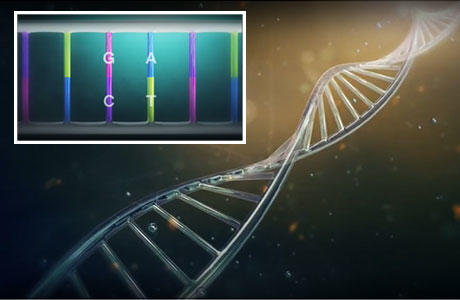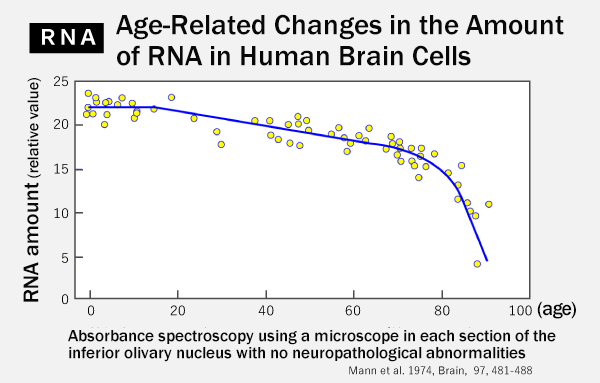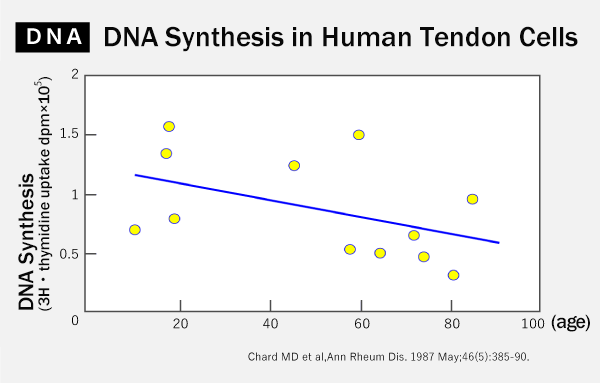Nucleic Acid Story
The beginning of nucleic acid research
Nucleic acid research has a long history, dating back to 1869, when Friedrich Miescher of Switzerland discovered an unknown substance found in a sample of feline pus. The substance was named "Nuclein" in 1871. The following year, in 1872, Miescher had found large quantities of Nuclein in salmon milt derived from salmon that migrated up the Rhine river. He later discovered that Nuclein was bound to a basic protein called Protamine (also discovered and named by Miescher).
The long history of nucleic acid research using salmon milt began from then on. The research was succeeded by one of Miescher's students, Richard Altmann. In 1889, after completely isolating protein from Nuclein, Altmann named the substance "nucleic acid" due to its acidic nature. This substance is currently known as DNA.
These researches were taken further when Albrecht Kossel, another student in Miescher's lab, chemically analyzed Nuclein to discover that it was made up of four nucleobases, phosphates and sugars. This discovery led to winning the 1910 Nobel Prize in Physiology or Medicine.
 Friedrich Miescher
Friedrich Miescher Double-helix structure
Double-helix structureThereafter, there were many researchers who have succeeded on winning the Nobel Prize for their work on nucleic acid. The most well-known event took place when Watson and Crick demonstrated the double-helix structure in 1953. For their achievements, they were later awarded the Nobel Prize in Physiology in 1962.
Although Kossel was the first to discover the existence in the four nucleobases of DNA, the double-helix structure we know today would not yet be demonstrated until Oswald Avery discovered nucleic acid (DNA) to have genetic properties in 1944.
After Avery's discovery, Erwin Chargaff did a structural analysis of DNA and found the number of adenine (A) and thymine (T) to be the same, along with the number of cytosine (C) and guanine (G). Three years later, James Watson and Francis Crick discover the double-helix structure of DNA with adenine (A) pairing with thymine (T), and cytosine (C) pairing with guanine (G).
Later, in 1957, Crick introduced the "central dogma of molecular biology", a principle describing the roles in which RNA transcribes and translates the DNA blueprints to synthesize the essential proteins throughout the body.
In this way, many researchers have clarified the structure of nucleic acid as well as their involvement in heredity.
Nucleic Acid Research in Japan
In 1951, just before the discovery of Watson and Crick's double-helix structure, Japan publishes the first book on nucleic acid, "Nucleic Acids and Nuclear Proteins ― Physics, Chemistry, Biology and Medicine ― ". It was written by the 16 top-class Japanese researchers at the time, including Professor Toshio Ando of the Faculty of Science and Technology at the University of Tokyo, later edited by Professor Fujio Egami of Nagoya University.
In 1961, Professor Toshio Ando was one of the first in the world to clarify the chemical structure of protamine, a DNA-binding protein, and demonstrated its biological role for dietary and medical uses.
Meanwhile, Professor Fujio Egami discovered the enzyme ribonuclease T1. This discovery greatly contributed to isolating and determining the sequence for transfer RNA by Robert W. Holley, which later won him the Nobel Prize in Physiology or Medicine in 1968.
Since then, many Japanese researchers have produced historic results in their nucleic acid research.
 Japan's First Book on Nucleic Acid Research
Japan's First Book on Nucleic Acid Research "Nucleic Acids and Nuclear Proteins
― Physics, Chemistry, Biology and Medicine―"
Exhibited at the Fordays Quality Control Center
The Greatest Advancement in Life Science
The conclusion of the "Human Genome Project" [(1990-2003) the international collaborative research project aimed at decoding the human genome] resulted in decoding the entire sequence of the human genome, finding about 21,000 protein-coding genes comprising only 2% of the entire human genome. The enormous amount of information obtained from this project will lead to a post-genome research. New demographical findings obtained from these researches will apply to advanced medical technology such as medicines containing nucleic acids, custom-made medicine, regenerative medicine using iPS cells, and gene therapy using genome editing technology.
The Research of Nucleic Acid Supplementation
Nucleic acid research has become the central subject in life science. At the same time, nutritional research on the outcomes of consuming foods containing nucleic acid have been overlooked on a large scale. However, in the late 1970s, the United States reported the link between dietary habits and lifestyle-related diseases. This report led up to further research on functional substances in food.
According to a report in 1974, aging was made clear to be one of the main factors of the body's nucleic acid (RNA) reduction. Again, in 1987, another report stated the reduction of nucleic acid synthesis in the body is also due to aging.
One research result of the global nucleic acid supplementation research began with "IMPACT ®" developing the oral immunonutritional supplement containing nucleic acids in 1989. At that time, infants raised on infant formula had more frequent allergic diseases and diarrhea than infants raised on breastfeeding. From there, further research has found one key component abundant in breastmilk and a slightly in infant formula is nucleic acid (nucleotides). Since the early 90's, throughout Europe and Japan, nucleic acid (nucleotides) have been added to infant formula.
Fordays Nucleic Acid Research
To this day, the basis for nucleic acid research has been continuously expanding and perpetuated by the most prominent researchers and institutes in the world.
As a leading company in nucleic acid supplementation, Fordays has always been deeply involved in the development nucleic acid research. As research progresses, the consumption of nucleic acid are expected to have positive outcomes to support better health and contribute to longer life.
We have conducted joint research with prominent research facilities from the Life Science Institute to the University of Tokyo and Showa University, for the purpose of researching the nutritive functions and safety of nucleic acid by approaching molecular nutritional science. The outcomes of these researches have led to the achievement of patents pertaining to the Natural DN Collagen, including patents relating to the preventive medical potential of nucleic acid.
In 2019, as a joint research facility with the Life Science Institute, we have established the "Jisedai Kakusan Labo FD" at the Tokyo University of Agriculture and Technology. Since then, we have achieved patents for new analyzing methods and other beneficial factors pertaining to nucleic acid.
Furthermore, our eagerness to be pioneers of nucleic acid in the coming ages has led to the establishment of the "Fordays Next Generation Nucleic Acid Research Institute," a joint research program between the Jisedai Kakusan Labo FD and Tokyo University of Agriculture and Technology.
Nucleic acid research is the study of life in living organisms. Fordays will continue to conduct research on the new nutritive potentials nucleic acid may reveal, in which these outcomes could potentially lead to the contribution of Japan's aging society.



